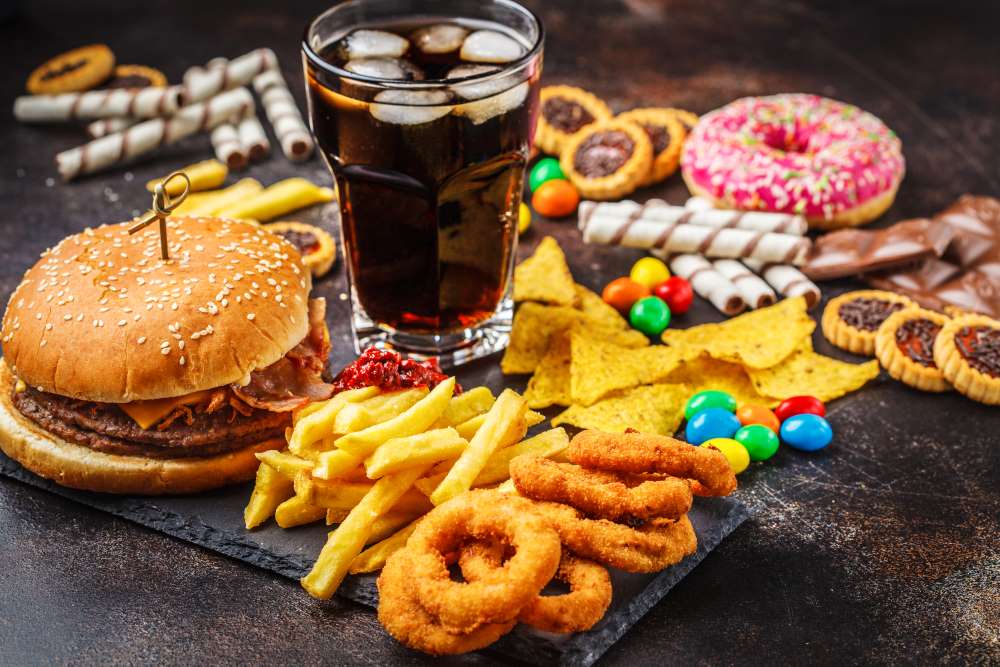Ultra-processed foods aren’t hard to pick out of a lineup. Here’s what to watch out for:
- Long ingredient lists—especially items that you can’t pronounce.
- Unnatural flavors and colors.
- Packaged in a way that makes them incredibly easy to eat.
- Marketing terms such as real, original, tasty, crunchy, homemade, or fresh.
- Pseudo-health terms such as potato chips made with sea salt and olive oil, or granola bars with honey and 100% whole grain.
Ultra-processed foods are energy dense and nutrient poor. They contain high amounts of stimulating chemicals, especially sugar, fat, and salt.
Ultra-processed foods have little fiber or protein (your most satiating nutrients). They stimulate you to eat, but don’t fill you up.
Almost 60% of the calories Americans eat come from ultra-processed foods, so it’s no surprise that we’ve seen a dramatic rise in metabolic diseases in our country.

Examples of Ultra-Processed Foods:
The following list just scratches the surface. Take a trip down any of the middle aisles in your grocery store to get a broader picture.
- Soft drinks/energy drinks
- Chips and snack foods
- Ice cream
- Fast food/Take-out food
- Instant noodles, oatmeal, soups, and sauces
- Energy bars
- Breakfast cereals
- Flavored yogurt
